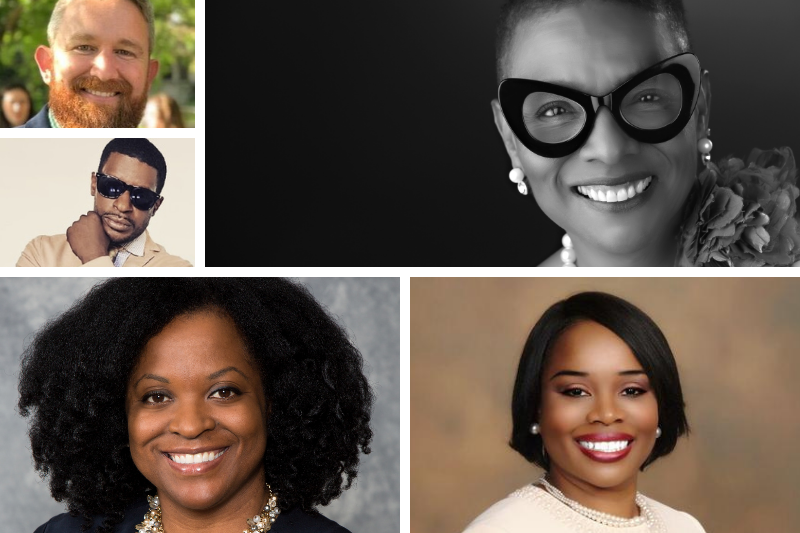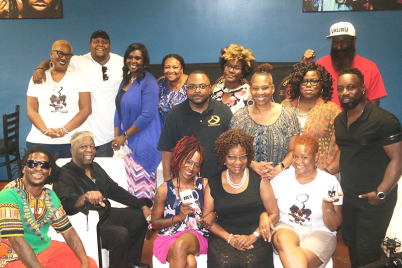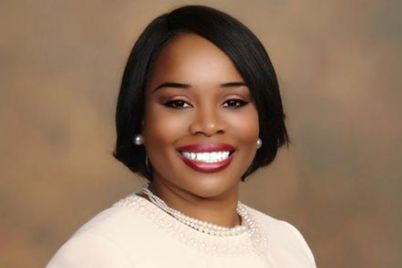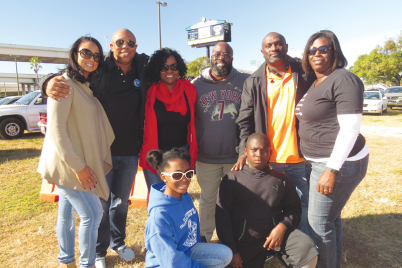Last month’s Community Conversations welcomed members of the Structural Racism Study to explain the process and their thoughts on a report that could bring about reparations to St. Pete’s Black community.
BY FRANK DROUZAS, Staff Writer
ST. PETERSBURG – Last month’s installment of Community Conversations — a partnership between the African American Heritage Association and Tombolo Books — welcomed members of the Structural Racism Study commissioned by the City of St. Petersburg.
The study’s main goals were to provide a historical overview and current data trends that illustrate how structural racism affects aspects of Black lives and communities in St. Pete. Another goal was to identify additional facets of structural racism impacting the Black residents and communities. The committee then made key recommendations to the city based on the findings.
Ruthmae Sears, the study’s principal investigator & USF professor of mathematics, said she devoted her time to the study because she is an advocate of access and opportunity and believed it was imperative to do such a vital project.
“It was painful, it was memorable, but it was worth it because it’s for the greater good,” she said.
Nikki Gaskin-Capehart, former director of Urban Affairs, served as a liaison between the city and the research team. She believed it was important “not to run from our history, and to be very intentional about the change that needed to happen,” adding St. Pete could be a trailblazer for cities to invest in such studies.
Gaskin-Capehart pointed out that the study could not have been done by government bureaucrats alone, as it would not have been as comprehensive as it ultimately was.
Rev. Andy Oliver, pastor of Allendale UMC, included findings from the study in his sermons for several weeks. He maintained that it is essential “for us to all know our history” and made sure that the congregation at his historically white church heard excerpts from the study every week.
Research team member and independent filmmaker Jabaar Edmond noted that the call for a study goes back a few years. He recalled an unnecessarily large police presence for the 2018 MLK Day Parade, during which officers demanded south St. Pete residents show identification before entering their neighborhood. Many south side residents appeared at the next city council meeting to voice their displeasure at such tactics.
“That began a whole process for advocating for an African American quality of life study,” he said.
The study, which began with the Kriseman administration, should continue and “transcend” administrations in the future, Gaskin-Capehart said. As for the findings themselves, Sears said the Jim Crow laws and policies that held sway in the city decades ago were very detrimental to the Black community, disenfranchising its members relative to healthcare, policing, housing, and job opportunities, not to mention the harsh realities such as vagrancy laws racial terror lynchings that targeted Black people.
Concerning the legal system, the disparity of the arrest records between whites and Blacks was quite noticeable, Sears said.
“But it didn’t stop in the 1910s or 1935,” she said. “These disparities also exist in the current day.”
The records in 2020 and the first three months of 2021 reveal that except for reckless driving, the percentage of defendants who are Black for each offense exceeds the percentage of the Black population in St. Pete. Furthermore, historically there has been a distinct lack of representation in the judiciary, city council, and school boards.
Access to economic opportunities would remain exclusively in white spaces, Sears said, as decisions relative to the schools, waterfront development, colleges, parks, beaches, even the famous green benches would benefit the white populace.
“The green benches, they are a symbol of a part of the history that was painful, where it was not for you,” she said, referring to the reality that for years Blacks were not allowed to sit on the benches that lined Central Avenue.
Oliver, who is involved in community organizing, maintains that “if we are doing organizing absent of our history, then we’re probably doing organizing that’s going to cause more harm than actually repair.” The most powerful part of the study, he added, are the reparations that it called for.
“Reparations can be a third rail for political discussions, but the word ‘reparations’ comes from the word ‘repair’ — to repair the harm that has been done, to invest in communities that have divested from,” he said. “These are things that we must all fight for.”
Edmond noted that reparations are essential, pointing out that the community “still sits on the segregated lines of the ’60s,” so disparities persist to this day.
“If we don’t repair it, we’re saying it’s not broken,” Edmond asserted. “So, I think there’s no real solution but to start repairing the community.”
Gaskin-Capehart noted the current redevelopment plans of Tropicana Field and the former Gas Plant neighborhood could be connected to a plan of reparations and a reinvestment into Black communities.
The research team made recommendations to the city based on the findings, among them the creation of an equity department, which would help the city move forward in addressing the issue of inequities within the city.
“It needs to be a constant commitment,” Sears said, “because equity is not an ‘add on,’ it’s an integrated component to ensure that these issues are addressed. By having this office under the purview of the mayor, it allows the voice to be always in the conversation.”
Reese said this study is only the first phase, as she and the rest of the research team believe this work must continue. Sears added that the city could explore reparations through policy changes or financial support, or structural policies created — or even modified or amended — to address some existing issues.
“This is where that community conversation and community voice is critical to really helping us think about what is reparation, and what is reparation suitable for this community,” she said.
Reese underscored that this study was not the “end-all,” but the beginning and one of the team’s recommendations was for the city to provide funding for even more research. Gaskin-Capehart said there “was so much to unpack” during the initial phase of research, and yet there is a much more to be done.
Oliver agreed that “this has to be a continued work and to completely dismantle systems that have been put in place before any of us were born, it’s going to take a really long time.”
“It’s taken us from 1619 to get here,” Reese said, “and so it cannot be solved in one study with one research team.”
Reese admitted that the stark findings of structural racism in the city over the years were difficult for her and traumatizing. The study came at a considerable cost, she said, for people of color who participated in the study.
“Black trauma is real,” she said, adding that putting together the report was “absolutely needed” and worth it. The racism had been embedded in the city for so long, she said, that even the Ku Klux Klan marched in the Festival of States — the premier parade in St. Pete for decades — because “those beliefs were so much a part of society.”
Sears acknowledged that the study was traumatic for her, too, but stressed that it was worth it to press on and view the project positively.
“There is hope for humanity,” she said. “There are people who are committed to healing. There are people who are committed to hope for a better tomorrow. There are people who are really committed to making change happen.”
A complete version of “Building Bridges and Supporting Structural equity in St. Pete” can be obtained at stpete.org/racismstudy.
To reach Frank Drouzas, email fdrouzas@theweeklychallenger.com








